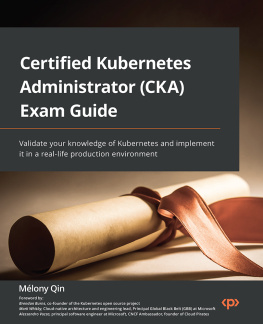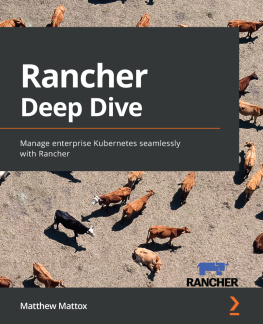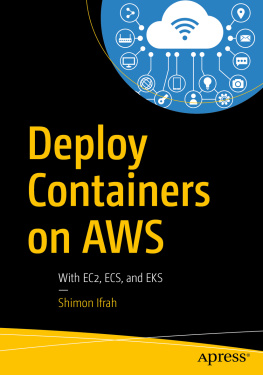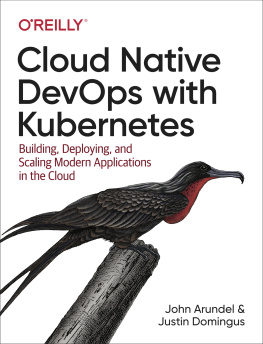Copyright 2019 by .
All rights reserved.
T his document is geared towards providing exact and reliable information with regard to the topic and issue covered. The publication is sold with the idea that the publisher is not required to render accounting, officially permitted, or otherwise, qualified services. If advice is necessary, legal or professional, a practiced individual in the profession should be ordered.
In no way is it legal to reproduce, duplicate, or transmit any part of this document in either electronic means or in printed format. Recording of this publication is strictly prohibited and any storage of this document is not allowed unless with written permission from the publisher. All rights reserved.
The information provided herein is stated to be truthful and consistent, in that any liability, in terms of inattention or otherwise, by any usage or abuse of any policies, processes, or directions contained within is the solitary and utter responsibility of the recipient reader. Under no circumstances will any legal responsibility or blame be held against the publisher for any reparation, damages, or monetary loss due to the information herein, either directly or indirectly.
Respective authors own all copyrights not held by the publisher.
The information herein is offered for informational purposes solely and is universal as so. The presentation of the information is without a contract or any type of guarantee assurance. The trademarks that are used are without any consent, and the publication of the trademark is without permission or backing by the trademark owner. All trademarks and brands within this book are for clarifying purposes only and are owned by the owners themselves, not affiliated with this document.
Do you wish you understood the revolutionary platform that companies all over the world are using to streamline their production? Then keep reading!
If youve been seeing all the fuss about Kubernetes and wondering how you could get in on that, then you need this step-by-step guide on the platform. This guide provides you with the steps you need in order to master the platform, deploy it through your entire production team and maximize the quality of your teams work while shrinking the lead time.
This is the perfect book to help you to master every aspect of Kubernetes from deployments to pods, services, client libraries, extensions, and all the other valuable assets this platform has to offer you. This book contains practical examples you can use to fully understand the material and to get an idea for how to creatively maximize your usage of this platform to augment your business!
In this step-by-step guide, you will find:
- The very purpose for which Kubernetes was created and how it does the things it does
- How to assist others in using this platform to maximize the quality of their work
- The limitations this platform has, and how to creatively navigate around them
- Detailed explanations of each of the features of the platform and how to use them
- The benefits of extensions for Kubernetes
- So much more!
Dont delay any longer in learning about and getting the best possible user experience in Kubernetes. With this book, you can adopt the most helpful habits and practices in using the platform, you can learn the strategies of the professionals who use this platform every day, and you can solve any possible issues or obstacles that present themselves.
There are no down-sides!
Buy your copy today and get started!
Table of Contents
K ubernetes (commonly styled as k8) is an open-source container-orchestration gadget to automate application deployment, scaling, and management. It was initially designed by Google and is now maintained through the Cloud Native Computing Foundation. It has the ambition to present "a platform for the deployment, scaling, and handling of application containers in groups of hosts". It works with a variety of container tools, including Docker. Many clouds offer to provide a Kubernetes-based platform or infrastructure as a provider (PaaS or IaaS), on which Kubernetes can be deployed as a platform providing service. Many carriers also offer their individual branded Kubernetes distribution.
Kubernetes was founded as Joe Beda, Brendan Burns and Craig McCluskey, soon with Brian Grant and Tim Hawkin assisting other Google engineers Were first announced by Google in mid-2014. Its development and design are closely influenced through Google's Borg system, and several contributors to the project Worked at Borg in the past. The original codename within Kubernetes. Google used to be Project Seven of Nine, a reference to a Star Trek personality of the same title as "Friends" Borg. Seven spokespeople on the Kubernetes brand of that codename There is a reference. The original was a Borg enterprise. Once written entirely in C ++, though the Kubernetes tool rewritten in Go is implemented.
Kubernetes v1.0 was launched on 21 July 2015. With the release of Kubernetes v1.0, Google partnered with the Linux Foundation to structure the Cloud Native Computing Foundation (CNC F) and introduced Kubernetes as a seed technology. On March 6, 2018, the Kubernetes project reached the ninth region at Commits in Github, and the authors and 2d vicinity in the Linux kernel.
Kubernetes objects
Kubernetes defines a set of building blocks ("primitives"), the mechanisms that deploy, maintain, and scale applications, primarily based on CPU, memory, or custom metrics. Kubernetes is relaxed and elaborate to meet specific workloads. This extensibility is provided in large part using the Kubernetes API, which is used by internal factors as well as extensions and containers that run on Kubernetes. The platform performs its management on computing and storage assets using sources defined as objects, which can later be managed in this way. The main items are:
The pod
A pod abstraction grouping has a high degree of containerized components. A pod consists of one or more containers that are assumed to be co-located on the host desktop and can share resources. The simple scheduling unit in Kubernetes is a pod.
Each pod in Kubernetes is assigned to deal with a unique pod IP within the cluster, which allows objectives to use ports, leaving the risk of conflict. Within the pod, all containers can refer to each other at the localhost, although a container inside a pod has no way without delay in addressing another container within every other pod; For this, it has to use the pod IP address. To use pod IP addresses in any way any application developer should use to refer/invite functionality to another pod, because pod IP addresses are short-lived - the unique pod they are referring to Can be assigned to any other pod IP. restart. Instead, they should use a reference to a service, which places a reference to the target pod at the specific pod IP address.
A pod can underline a volume, such as a local disk listing or a community disk, and expose it to containers in the pod. Pods can be managed manually through the Kubernetes API, or their management can be assigned to a controller. Such volumes are additionally the groundwork for the Kubernetes points of ConfigureMaps (to gain access to the configuration via the file system visible in the container) and privacy (the credentials required to securely access remote assets To gain access to, by providing these) the fa only seen for licensed containers Credibility on Il system).
Replica set
The Replica set is a grouping mechanism that allows Kubernetes to preserve the diversity of cases that have been declared for a given pod. The definition of a replica set uses a selector, whose evaluation will reveal all the pods that are associated with it.












